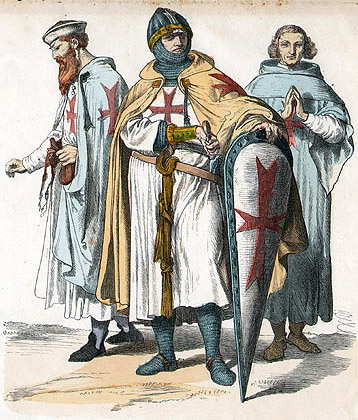The Templars: notes on the Rule of the Order of the Temple
From clothing prescriptions to prohibitions against "female temptations": a further study of the most curious articles of the Templar Rule

Illustration of some Knights Templar - Wikimedia
Let’s continue exploring the Templar Rule by examining some of its most intriguing articles. This Rule, as we have seen, offers a valuable insight into how a Templar was expected (at least theoretically) to live.
The first article we analyze pertains to clothing: Article 68 states that initially even squires and sergeants wore the iconic white cloak, but later, they were assigned a black one because, in Armenia, this practice had “greatly harmed the Order.” In that region, “false brothers”—married men—were admitted into the Order, causing significant scandal. Article 70 is notable, as it imposes a ban on accepting women, deemed “dangerous” because “the devil, their eternal companion, has often led many away from the path to paradise.” This rule aimed to preserve the knights’ “flower of chastity.” Article 71 reinforces this prohibition, asserting that it is “dangerous for any man of faith to gaze too long upon a woman’s face,” and forbids kissing any woman, even a relative, as such gestures have “often led men to ruin.” The intention was to keep the knights “always before the face of God, with a pure conscience and a steadfast heart.” An interesting allowance to the Rule’s rigidity is found in Article 73, which permits the master to overlook certain prescriptions, allowing for flexibility when necessary.
After a series of articles on the Order’s hierarchy, Article 122 provides instructions for the Commander of Jerusalem on how to defend and safeguard the True Cross when it was outside the Holy City. Articles 138 and following meticulously list the items allocated to the knights and sergeants, down to the exact count of linen garments. Finally, Article 155 states that in the event of an alarm outside the encampment, the knights must remain in place “even in the presence of lions or other wild beasts” (evidently, lions were a significant adversary for the Order!).
Jose Vincenzo Molle (edited by), I Templari. La Regola e gli Statuti dell'Ordine, Genoa, ECIG, 1995
2025-02-28
Salvatore Ciccarello
